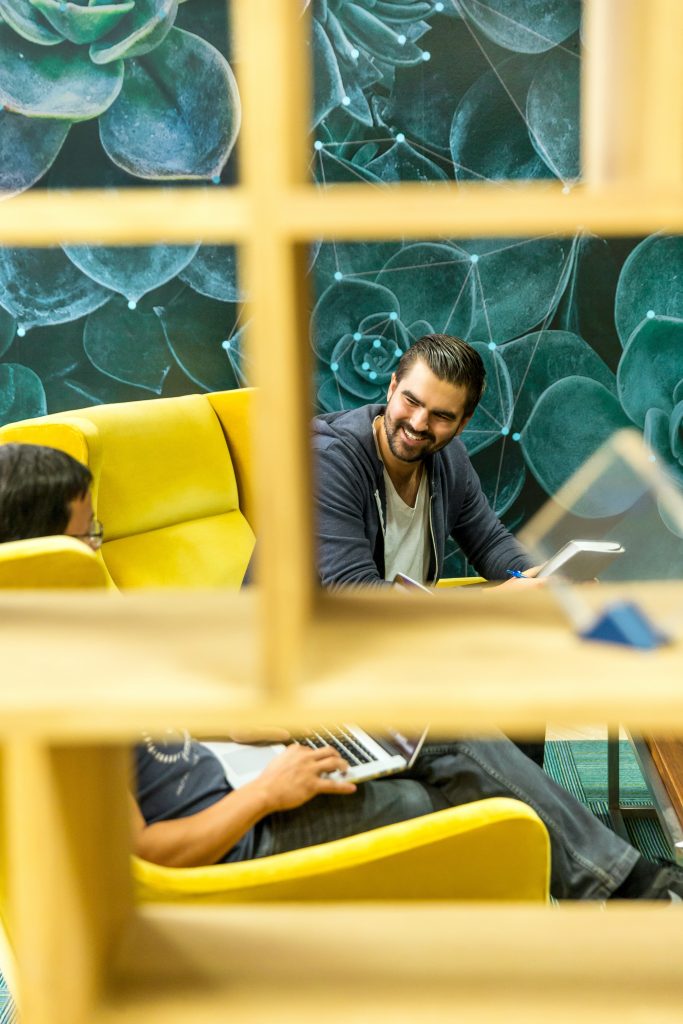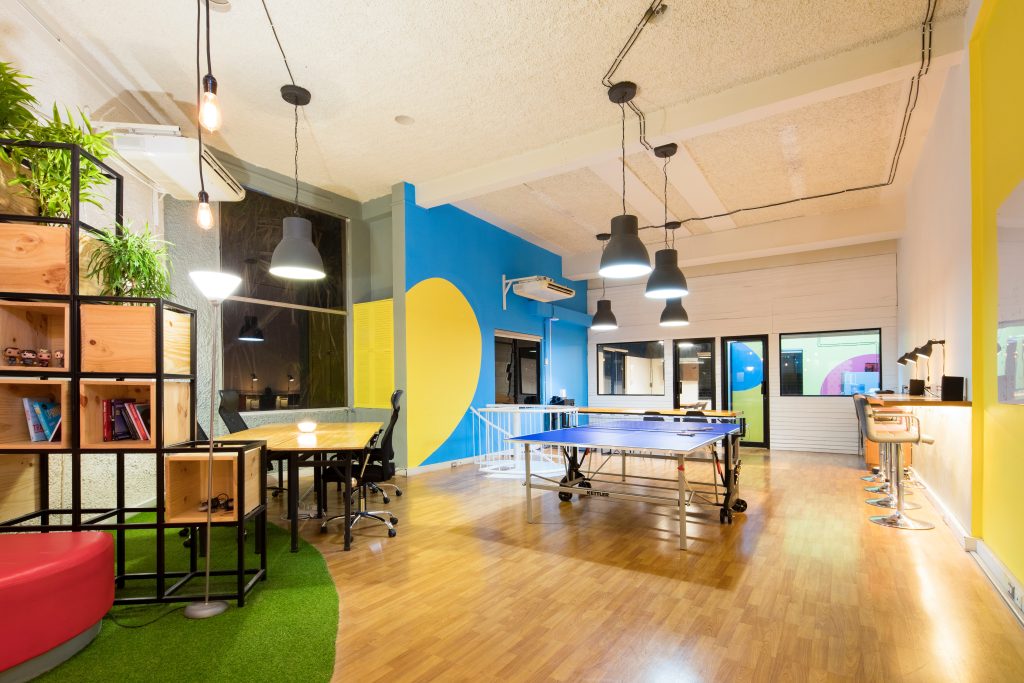In case you missed it, the Office of the Surgeon General released a report on workplace and mental health entitled “The U.S. Surgeon General’s Framework for Workplace Mental Health & Well-Being.” The report makes the case that workplace mental health and well-being is a priority for public health because it impacts everything – individuals, their families, their communities, organizational productivity, business results, and the nation as a whole.
The report identifies five main areas called Five Essentials for Workplace Mental-Health & Well-Being, which are Protection from Harm, Connection & Community, Work-Life Harmony, Mattering at Work, and Opportunity for Growth. With these Five Essentials in mind, organizational leaders can strengthen and update programs, policies, and general practices focused in the workplace on employee mental health and well-being. This report is also insightful to inform updates to physical real estate, workplace design, and the portfolio in service of a better employee experience.
We read the report and identified the top real estate and workplace design methodologies worthy of consideration for your next office design and real estate planning in support of the five essentials.
Understanding the Essentials
This first essential states that people need to have a positive sense of safety and security in the workplace. Workplace safety means all employees are in a healthful and safe environment, protected from harmful and adverse conditions. This essential covers physical and psychological safety. Specifically, psychological safety endeavors to shield employees from bias, discrimination, emotional conflict, and discrimination.
The core components are:
- Prioritize workplace physical and psychological safety
- Enable adequate rest
- Normalize and support
- Operationalize Diversity, Equity, Inclusion, and Accessibility (DEIA) norms, policies, and programs
Employees need to have some sense of social support and belonging. Social support aids in physical and psychological safety, emotional support, information and connection, and combats isolation. Belong aids in feeling like being a bigger part of something at work and in the community.
The core components are:
- Create cultures of inclusion and belonging
- Cultivate trusted relationships
- Foster collaboration and teamwork
This essential drives the need for autonomy and flexibility for employees. Creating a platform of autonomy and flexibility leads to great employee satisfaction and retention. Providing autonomy and flexibility signals to employees that organizations have latitude on how and when work occurs and provide respect for healthy boundaries.
The core components are:
- Provide more autonomy over how work is done
- Make schedules as flexible and predictable as possible
- Increase access to paid leave
- Respect boundaries between work and non-work time
Actions and intentions that organizations take must contribute to employee dignity and meaning. Contributing to employees’ greater sense of purpose and significance of their work. These intentions also contribute to improved productivity and inspiring innovation.
The core components are as follows:
- Provide a living wage
- Engage workers in workplace decisions
- Build a culture of gratitude and recognition
- Connect individual work with organizational mission
Employees endeavor to acquire knowledge and gain new skills, which contribute to individual and organizational growth in the near term and strengthen communities in the long term. A desire for learning and accomplishment is critical.
The core components are as follows:
- Offer quality training, educating, and mentoring
- Foster clear, equitable pathways for career advancement
- Ensure relevant, reciprocal feedback
How to Implement these Essentials in the Workplace
Now that we see the importance of these essentials, it’s time to update our workplaces to foster these concepts. KGO’s Strategy and Consulting team makes four recommendations on how you update your space to keep these essentials top of mind.
Set a Logical Flow, Circulation, and Zones for Work & Restorative Needs
During planning phase of your office design, ensure the flow and circulation leads people into zones specific to work, communal, and social spaces, which will contribute to a sense of physical safety. The intent is to plan the office in a manner where employees are not far away, disconnected, or too remote, which would comprise their safety.
Additionally, careful planning will uncover ways to implement major work, collaboration, social, and restorative areas that are logical, usable, and accessible to all employees. This is beneficial a macro level for the overall design layout and at a micro level for the arrangement of spaces in neighborhoods.
Planning and zoning your office design does not require densifying with offices, cubicles, and conference rooms. Densification in this manner does not contribute to greater occupancy and utilization. In fact, planning zones with a mix of work, collaborative, social, and restorative areas have an 8% to 13% higher utilization by employees in comparison to ultra-dense office layouts.

Implement a Variety of Spaces
Different tasks require different environments. By offering a variety of spaces, such as open collaboration areas, private meeting rooms, quiet zones, and relaxation areas, employees have the flexibility to choose the space that best suits their needs. This can help improve their well-being, reduce stress, and enhance productivity by creating an environment conducive to focused work, collaboration, and creativity.

When planning your office, focus on providing a variety of spaces that support general productivity, collaboration, socialization, learning, restorative time, brainstorming, deep thinking, and focus. Additionally, employees can have spaces to find refuge, focus, and practice individual mindfulness.
As an added bonus, creating a workplace that caters to various work styles and preferences contributes to higher employee engagement and satisfaction. When employees feel that their work environment supports their needs and preferences, they are more likely to be motivated, engaged, and satisfied with their job. This, in turn, can improve retention rates, boost morale, and enhance overall employee well-being.
Support Your Desired Sense of Community
When done well, the workplace design can convey that employees are important, contributes to employees’ felling of dignity, conveys an emotionally intelligent experience, and helps deliver a great sense of purpose organizationally and individually.
Defining and identifying aspects of the organization that should appear in the desired sense of community for the design is critical in the initial planning process. Qualities for the sense of community, such as celebrative, collegial, communicative, and promoting a sense of choice, should be considered early and revisited to ensure these qualities are met during the course of the design.
Understand Employee Occupancy & Utilization Rates
Before the pandemic, companies and organizations were registering peak occupancy and utilization rates between 70% to 80%. Post-pandemic, employee use of office space shifted based on where it is best to perform specific work tasks (e.g., at home, remotely, or in the office).
Planning with occupancy and utilization in mind can help set the aspects for the kind of work, restorative needs, and sense of community the office should serve for employees. The end result is providing an environment and vibe that employees desire, and more thoughtfulness for when and how much to expand the office for future growth.
Download our Essentials Checklist for how to update your office!
Fill out the form below to receive a complimentary checklist that you can use for easy reference when planning your space.
Ready to get started?
Contact our Strategy and Consulting Team below!
